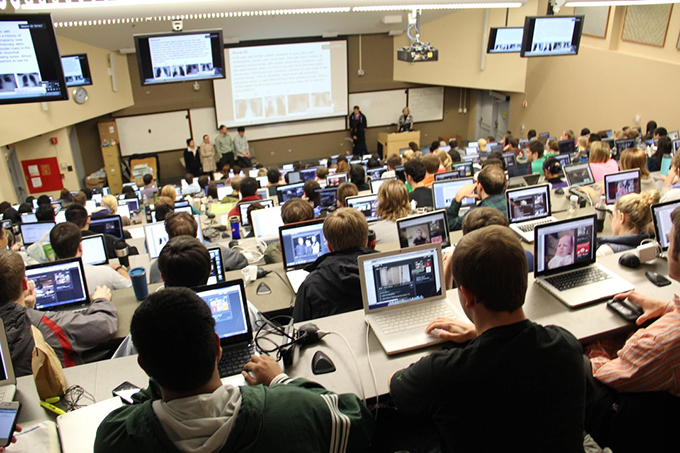
By The Vagabond News Editor – Sudhir Choudhary
Their Professors Caught Them Cheating. They Used A.I. to Apologize.
What happened
At University of Illinois Urbana‑Champaign, instructors in the Grainger College of Engineering discovered a new twist in academic-integrity violations: students who had been flagged for cheating using A.I. tools then turned around and employed those same tools to craft their apology emails. (Daily Express US)
In a recent class, professors Karle Flanagan and Wade Fagen‑Ulmschneider noted something peculiar: dozens of student emails started with the identical line: “I sincerely apologise for my misuse of the data-science clicker.” When many-many such emails were received, the instructors realised the students were using the same A.I.-generated text. (Daily Express US)
Why this matters
- It signals that the use of generative artificial-intelligence isn’t just for completing assignments or cheating — students are now leveraging it for damage-control and communications, muddying the line between “own words” and “machine-crafted” responses.
- For professors and institutions, the situation raises a fresh question: when an apology (or communication) is obviously recycled or A.I.-generated, how sincere is it? And does it reflect genuine reflection or just a clever workaround?
- This trend exposes the evolving challenges of academic integrity in the A.I. era: not only detecting cheating, but also verifying authenticity of all student-produced communication.
What the professors did
When they realised the mis-match, the instructors decided to hold up the identical emails to the entire class via projector and say: “If you are going to apologise, don’t use ChatGPT to do it.” One professor described the moment as:
“Then suddenly, it became way less sincere.” (Daily Express US)
The class was alerted that repeating the same A.I.-generated phrasing constituted a breach of academic honesty-policy as much as using the A.I. to answer questions.
Broader context & implications
- This incident is part of a larger pattern of using A.I. in academic settings — both legitimately and illicitly. Research shows students often turn to A.I. tools like ChatGPT without instructor consent, raising integrity concerns. (Wikipedia)
- Meanwhile, institutions are grappling with detection tools and policies — but these focus largely on assignment content. This case suggests monitoring must extend to all student communications.
- There’s also the philosophical question: when apologies or explanations are machine-written, do they carry weight? Does integrity require human authorship in ethics-matters?
What to watch next
- How the University of Illinois updates its syllabus and policies regarding use of A.I. for communications, not just assignments.
- Whether other institutions report similar patterns of students using A.I. to write apology or explanation letters.
- How academic-integrity frameworks evolve: will “A.I.-assisted apology” become a new category of violation?
- The balance schools must strike between educating students about proper use of A.I. and enforcing consequences for misuse.
Related links
- “Students caught using AI after professor notices one mistake over and over again” — The Express (Daily Express US)
- “On Perception of Prevalence of Cheating and Usage of Generative AI” — research paper (arXiv)
- “ChatGPT in education” — overview of challenges and policy responses (Wikipedia)

